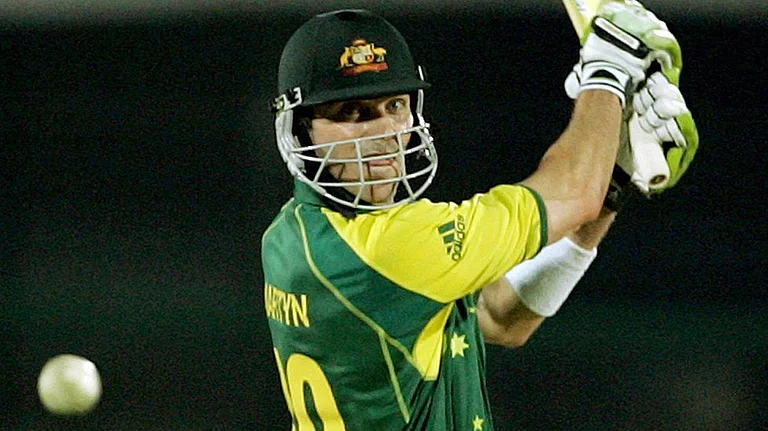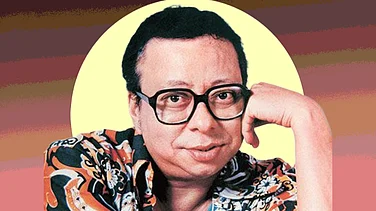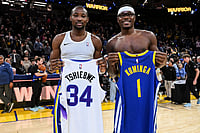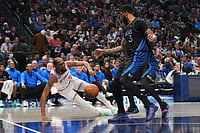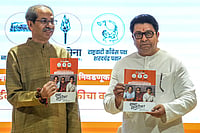2006:Best Bollywood Year
Top 25 films deliver gross collections of about Rs 620 crore, a 26% increase over 2005
- Record number of blockbusters and superhits, with as many as six films registering collections of over Rs 40 crore each, two of them with a gross of over Rs 60 crore.
- Lage Raho Munna Bhai is whisper-close to ousting Gadar as the biggest Bollywood hit of the decade.
- Markets expand. Overseas market grows bigger. Kabhi Alvida Na Kehna dislodges Kabhi Khushi Kabhie Gham to become the highest overseas grosser of all times.
- Biggest ever deals: Adlabs signs Hrithik Roshan for a record Rs 30 crore, three-film deal; gets into a Rs 100-crore contract with Ram Gopal Verma for making 8 films.
- Budgets get bigger, hype gets louder, marketing becomes more in-your-face. Bollywood tries to follow the Hollywood model of big releases, big hype and big collections.
- Small, multiplex films also find a viable niche.
***
Dream Machine Rolls On
This is how much the top 25 films earned since 2001
2001 Rs 346.7 cr
Top films: Gadar, Kabhi Khushi Kabhie Gham, Lagaan
2002 Rs 282.7 cr down by 18%
Top films: Devdas, Raaz
2003 Rs 374.7 cr Up by 33%
Top films: Koi Mil Gaya, Kal Ho Naa Ho, Baghban, Munnabhai MBBS
2004 Rs 419.2 cr Up by 12%
Top films: Veer Zaara, Main Hoon Na, Dhoom, Hum Tum, Murder
2005 Rs 491.1 cr Up by 17%
Top films: No Entry, Bunty Aur Babli, Kya Kool Hain Hum
2006 Rs 620.6 cr Up by 26%
Top films: Fanaa, Krrish, Lage Raho Munna Bhai
***

Krrish: Rs 64.86 Cr: Blockbuster
Raj Kumar Hirani is today feeling on top of the world. When he started working on Lage Raho Munna Bhai he had no inkling that his modest creation would soon grow into a larger-than-life phenomenon. The story about a crook, his love for a radio jockey and his experiments with the Mahatma isn’t usually the stuff of which 70-mm successes are made. "It didn’t follow the dictates of commercial cinema, it had no sexy item numbers," says Hirani. Yet as he looks back at the collections (Rs 69.13 crore, boxofficeindia.com) he finds the film steadily inching towards Gadar’s magic figure of Rs 70 crore, to stake a claim for becoming this decade’s biggest blockbuster.
One big blockbuster is not enough to get Bollywood smiling. But this year there have been so many that the industry has been laughing all the way to the bank. There haven’t just been more hits but bigger hits with bumper collections—2006 has been a year that boasts three blockbusters (Krrish, Lage Raho and Fanaa) and an assortment of superhits and hits: Rang De Basanti, Phir Hera Pheri, Malamaal Weekly, Kabhi Alvida Na Kehna (KANK), Don, Gangster.... As many as six films have registered a gross of over Rs 40 crore, two of them of over Rs 60 crore. Not that it has been the year of the biggies alone. Even small efforts like Being Cyrus, Khosla Ka Ghosla and Pyaar Ke Side Effects have charmed the viewers, making it a great year for the multiplex movies as well.
Accurate figures are difficult to come by in a largely disorganised industry. However, even though trade figures may vary from one journal to the next, there is unanimity on one count: things couldn’t have got bigger. Movies are back in business. "It would be the biggest year in the last decade," says Komal Nahata, editor of the trade magazine Film Information. "The revenues accrued are unprecedented," says filmmaker Karan Johar. "The collections have been outstanding and the year isn’t even over yet. It is the most exciting time for Bollywood," says Fanaa director Kunal Kohli. Exciting it had to be with almost every top filmmaker, save Ashutosh Gowariker and Sanjay Leela Bhansali, delivering a film in 2006; top heroes like Shahrukh Khan, Aamir and Hrithik have given not just one but two biggies each this year.
However, just a few years ago the story was entirely different. Bollywood had hit the the nadir in 2002 and has been steadily trying to rise since then. In 2002, it’s reported to have lost Rs 290 crore on investments of Rs 1,000 crore and had just two hits to boast of—Devdas and Raaz. This year the top 25 earners have registered collections of approximately Rs 620.6 crore, a jump of about 26 per cent over last year. Close to 20 films have hit the bull’s eye, and the percentage of successes is up from a normal 11-12 per cent to more than 15 per cent. This, when two of the biggest films, Yashraj Films’ Dhoom 2 and Ravi Chopra’s Baabul, are yet to play out.

Fanaa :Rs 53.13 Cr: Super Hit
"People are returning to cinemas," says Nahata. "Film viewing has again emerged as the primary entertainment option for the middle class. In metro cities, it has become almost mandatory to visit multiplexes on weekends," says Manmohan Shetty, chairman, Adlabs. According to Rajender Singh, head of operations and programming at Delhi’s Chanakya theatre, the current bull run is a continuum of last year. There had been a seven per cent rise in the number of patrons for Chanakya in 2004-2005 over 2003-2004. This year the rise is double that.
Markets for Bollywood are reported to be growing at about 12.6 per cent per annum. It’s a similar scenario overseas. "The rising financial and social profile of the NRIs is making mainstream theatre chains in the US and UK play Hindi movies," says Ronnie Screwvala, CEO, UTV. A territory like Australia which used to be worth $50,000 has now grown ten times bigger. No wonder KANK was able to dislodge Kabhi Khushi Kabhie Gham to become the highest overseas grosser of all times.
So why are audiences flocking like never before to movie halls? Is it merely to do with the nation’s booming economy and the increased spending power of the middle class? Or is it that the films are becoming good enough to make people throng the theatres? Anyone tracking Bollywood closely over the years will find a marked improvement in the films. Of course, we are still far away from the classic ’50s, but there’s a definite push forward from the execrable ’80s and the soft-focus ’90s. "Qualitatively we are seeing far superior films," says Bhuvan Lal of MCORP Global Entertainment Division.

Rang De Basanti: Rs 51.07 Cr: Superhit
In their own way, films are getting more real and rooted, not in an imaginary, idealistic notion of India but the new, globalised, mall-shopping, pub-hopping, aspirational India. So within the heightened mainstream, story-telling formats, films like Rang De, Lage Raho and Khosla... did talk about the anger, fears, aspirations and frustrations of Indians, reflecting credible images of contemporary urban India that strike an immediate chord with audiences. "There is something new emerging—a new, confident, thoughtful Bollywood. Lage Raho made a social impact; Rang De was able to generate new controversies. These films opened possibilities of debate, turned the entire nation into critics," says sociologist Shiv Visvanathan. Small-town India wasn’t left out of the picture either. Films like Vivaah and Aksar were able to reach out to the hinterland. In fact, there has been a film for everyone rather than the usual one-size-fits-all formula. There were the big brand films and small, intimate movies too. "Films like Khosla... were about small people, even in Lage Raho the side star was an entirely new invention than just a cliche," says Visvanathan. Then you had films that brought alive the regional roots, be it the Parsi ethos of Being Cyrus or the western UP badlands of Omkara. Bollywood dared to travel beyond Bombay and Switzerland.
The hits this year cut across genres and formulas, each different from the other. There have been newer sensibilities, varied formats. "It’s not just about big business, but big ideas and creativity," says Kohli. "Newer, daring ideas are working," says Hirani. Much of it has to do with the whole new breed of film professionals who have stormed Bollywood. Meet them at their regular haunt—the Barista at Bombay’s Yari Road—and you will find yourself face to face with intelligent, articulate, thinking, sensitive people. So the big stars in their mellow 40s are willing to stretch themselves that much more to do something new with them. You haveSRK rubbing shoulders with a team of 12 real women hockey players rather than singing songs around trees with a glam babe in Shimit Amin’s Chak De India, slated to be released next year. Aamir is working on his new production with the unknown Amol Gupte, on a small film called Tare Zameen Par. And showman Johar wants to work on an animation film next year.

Kabhi Alvida Na Kehna: Rs 46.4555 Cr: Hit
The youngsters in the industry themselves believe that the changing tastes of viewers are making all the difference. "The industry is not changing internally but reacting to the change in viewers," says Saket Choudhury who tasted success this year with his maiden film, Pyaar Ke Side Effects. "The maker and audience have finally got in sync," says Indu Mirani, editor, thirtymm.com. "There is a new awakening amongst audiences," says Johar. "The year marks the triumph of the audience. They are experimenting with non-conventional content. They are not just asking for stars but an engaging and interesting experience," adds Pritish Nandy, chairman, Pritish Nandy Communications.
The fact is that the new, young talent is also finding more opportunities to work. "There is more space to do your kind of work," says Choudhury. "Multiplexes have been mushrooming across the country and they have fuelled the demand for films," says Screwvala. So there has been an unprecedented scaling up of operations. "It’s like the dotcom boom. The buoyancy is making people invest money in films, everyone wants a share of the pie," says Choudhury. Everyone is making many more movies. Hrithik was signed by Adlabs for an unheard-of Rs 30-crore deal for three films, Ram Gopal Verma has got Rs 100 crore to make eight films and Vipul Shah (Aankhen, Waqt) has got Rs 210 crore. A big studio like Yashraj is also coming up with far more films. Earlier, a Yash Chopra used to come up with one film in three years. Now there are four to six films in one year. Not all these films can be handled by established names alone, so newcomers are getting the chance to command the ship. No wonder Yashraj has brought outsiders like Kabir Khan (Kabul Express) and Sanjay Gadhvi (Dhoom series) into their fold.

Don: Rs 44.47 Cr: Hit
Meanwhile, a lot else is happening in Bollywood. Filmmaking is becoming more professional, budgets are getting rationalised to make profits. The growing multiplexes, their higher ticket rates and tax exemption are giving them higher returns. DVD and satellite rights are growing. Rajashris have tried out another revenue stream in Vivaah: downloading of the film from the Net. The other strategy that has been delivering profits is hitting the box office with a larger number of prints and making all your money in the first week itself. "Wide release means huge initials and quick recovery. Krrish collected Rs 40 crore in the first week itself. Nowadays in two weeks you are home, earlier it used to take almost a year for the film to break even," says Rajender Singh. On the other hand, reduced shelf life has turned films into quick consumables. "There is very little shelf space. There are no enduring films," mourns filmmaker Mahesh Bhatt.

Khosla Ka Ghosla: Rs 4.56 Cr: Sleeper Hit
The films are also being marketed and promoted aggressively. Whatever be the fate of Dhoom 2, a film which Visvanathan describes as a "revved up supermall of stars in action", its trailer in the theatres has caught on like wildfire, there hasn’t been such a massive build-up of anticipation in a long while; and a brand has been built like never before. There is also a growth in brand tie-ups—Samsung with Krrish and now Coke and Pepe with Dhoom 2. TV, always an adversary, has become an ally, helping build curiosity for a film. "Media has enhanced everything, be it the boy in the well or KANK," says Kohli. "Making a good film is not the end of the story, it has to be taken to the audiences," says Screwvala. "You also need to project a film well," says Johar. Bhatt, however, feels films are getting driven a bit too much by marketing hype. "It’s not the power within but the externals; it’s all razzle dazzle but little depth. We need to get back to the socially relevant classical Indian cinema that can help reconnect with our spiritual, emotional roots," says Bhatt.
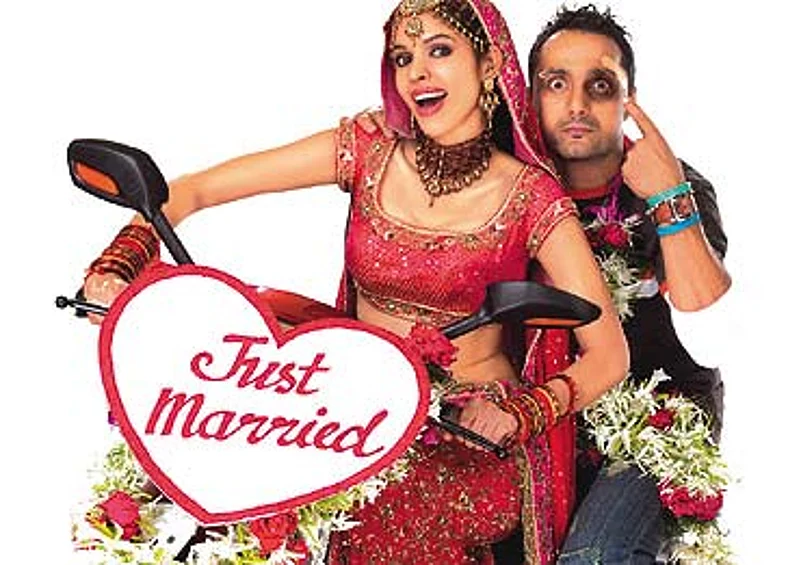
Pyar Ke Side Effects: Rs 8.48 Cr: Sleeper Hit
So is it all so rosy? Should we uncork the champagne? Not so soon. Flip the coin and you’ll find that for every little gem like Khosla... there have also been the totally trashy Naksha and Unns. If the audience is maturing and becoming discriminating, then why did it give a nod to a banal flick like Tom Dick and Harry and ignore some nice efforts like Omkara and Ahista Ahista? Sanjay Dutt-Arshad Warsi gave us Lage Raho alright but didn’t they also foist a dud like Anthony Kaun Hai on us? "If there have been big hits, there have been big flops too like Umrao Jaan, Jaan-E-Mann, Family," reminds Delhi distributor Sanjay Mehta.
No wonder Bollywood itself is circumspect. "We have a tendency to exaggerate pluses and play down the minuses," says Bhatt. "We are making unrealistic projections for the future based on the sudden boom," says Kohli. There is apprehension that today’s slick, assembly-line filmmaking, which doesn’t give enough priority to good scripts and creative concepts, might lead to the bubble bursting. Today lots of films find perfect endings at the box office. But does that mean happily ever after for the industry? Lage raho...guessing.
Post Script: December 28 : As we end the year 2006, as per boxofficeindia.com, Dhoom2 is already giving competition to Lage Raho... with a reported business till date of 68.24 crores - Ed, outlookindia.com]







